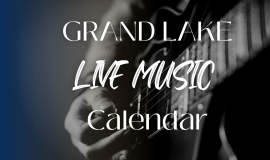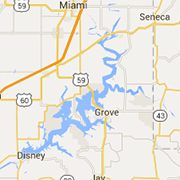August 29 GRDA Weekly Report

Happy Labor Day

Boat Safe Boat Smart Boat Sober

Boats gather on the waters of Grand Lake on a 2018 summer day. Large crowds are expected during the upcoming Labor Day weekend. If you are headed to Grand Lake, Lake Hudson or the Illinois River, GRDA reminds you to boat safe, smart and sober.
River Safety

Illinois River
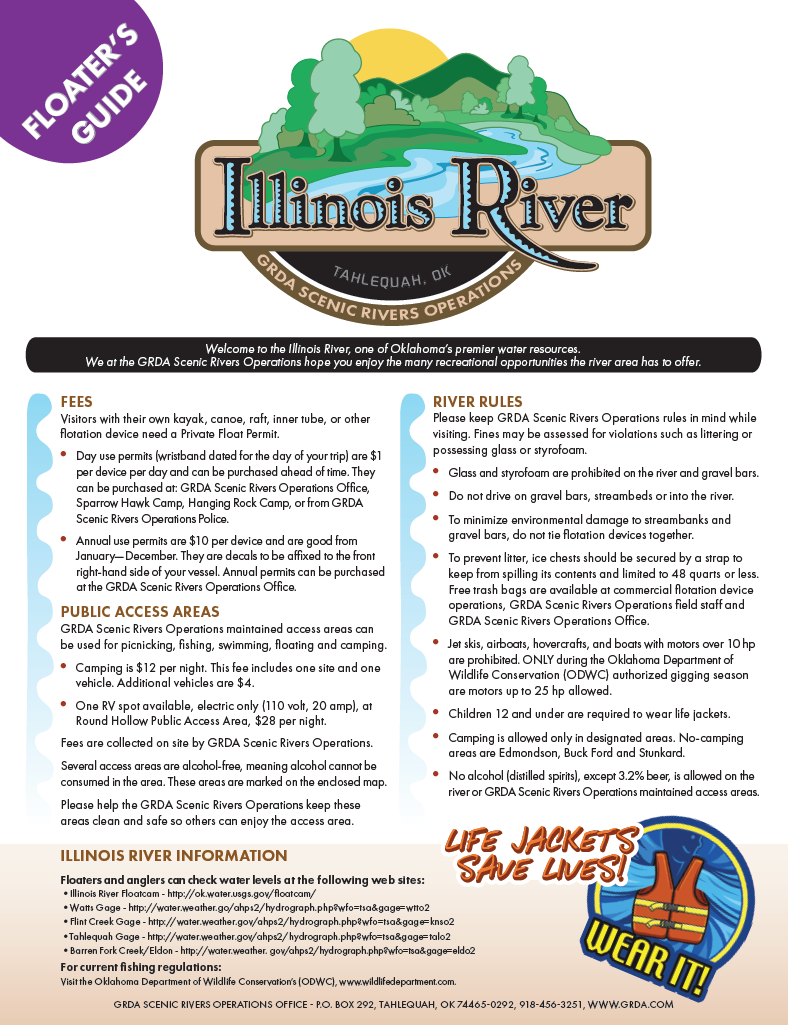

Cherokee Park Ramp Closed
The public boat ramp at the Cherokee State Park at Pensacola Dam was closed to use last week after several complaints were received about a large sink hole that was on the ramp about 15 feet into the lake. The hole measures 6 feet wide and is 4 feet deep. The State Parks Department closed the ramp in the interest of public safety till repairs could be made.
Cherokee Park Ramp Closed

The public boat ramp at the Cherokee State Park at Pensacola Dam was closed to use last week after several complaints were received about a large sink hole that was on the ramp about 15 feet into the lake. The hole measures 6 feet wide and is 4 feet deep. The State Parks Department closed the ramp in the interest of public safety till repairs could be made.
Did You Know?

While boaters are required to have a U.S. Coast Guard-approved wearable life jacket on board for every person on their boat, boating safety advocates recommend that everyone on board wears a life jacket at all times while boating. Accidents on the water happen much too fast to reach and put on a stowed life jacket. Drowning is the reported cause of death in 80 percent of all boating fatalities – and 83 percent of drowning victims in recreational boating accidents were not wearing a life jacket.
Adobt-The-Shoreline

Safety Education Programs
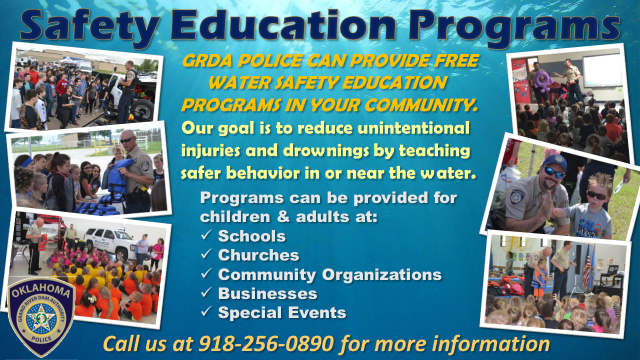
Lake Rules
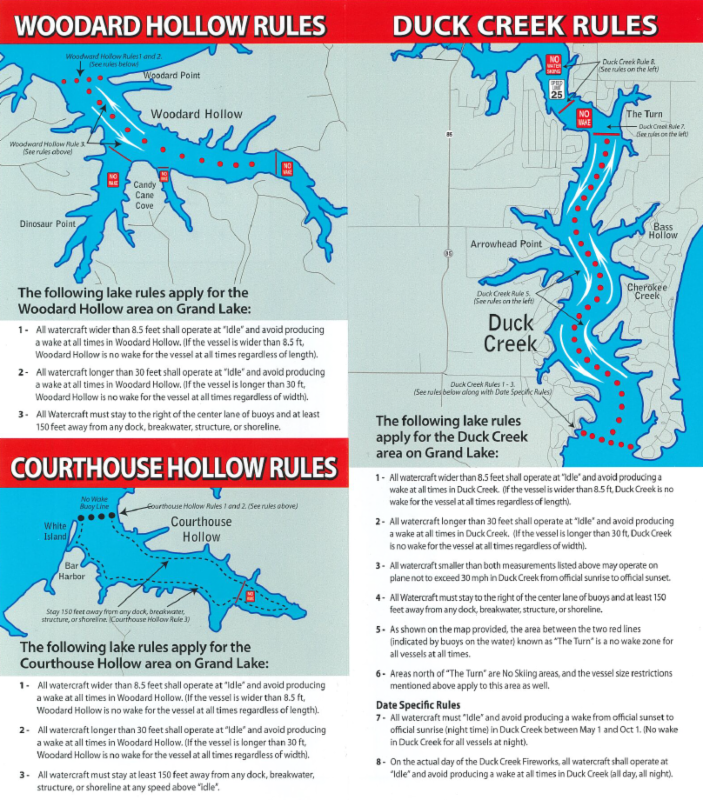
Never Boat Under The Influence

Updates on the Web

Did you not receive our latest GRDA Update? Do you have a friend that wants to see our Updates? You can now go to our website at GRDA.com to view the latest edition of GRDA Police Updates. Go to the Lakes/River tab, open the GRDA Police tab and click on the GRDA Police Update for the latest version of our email release.
Boating Tips From the GLSPS

Seamanship Courses presented by Grand Lake Power Squadron

NAV TIME

- Slow down, but keep enough power to maintain headway and steering.
- Close all hatches, windows, and doors to reduce the chance of swamping.
- Stow any unnecessary gear.
- Turn on your boat’s navigation lights. If there is fog, sound your fog horn.
- Keep bilges free of water. Be prepared to remove water by bailing.
- If there is lightning, disconnect all electrical equipment. Stay as clear of metal objects as possible.
- Have everyone put on a USCG–approved life jacket (PFD). If passengers are already wearing their PFDs, make sure they are secured properly.
- Have your passengers sit on the vessel floor close to the centerline for their safety and to make the boat more stable.
- If possible, head for the nearest shore that is safe to approach. If already caught in a storm, it may be best to ride it out in open water rather than try to approach the shore in heavy wind and waves.
- Head the bow into the waves at a 45-degree angle. PWCs should head directly into the waves.
- If the engine stops, drop a “sea anchor” on a line off the bow to keep the bow headed into the wind and reduce drifting while you ride out the storm. In an emergency, a bucket will work as a sea anchor.
- If the sea anchor is not sufficient, anchor using your conventional anchor to prevent your boat from drifting into dangerous areas.



